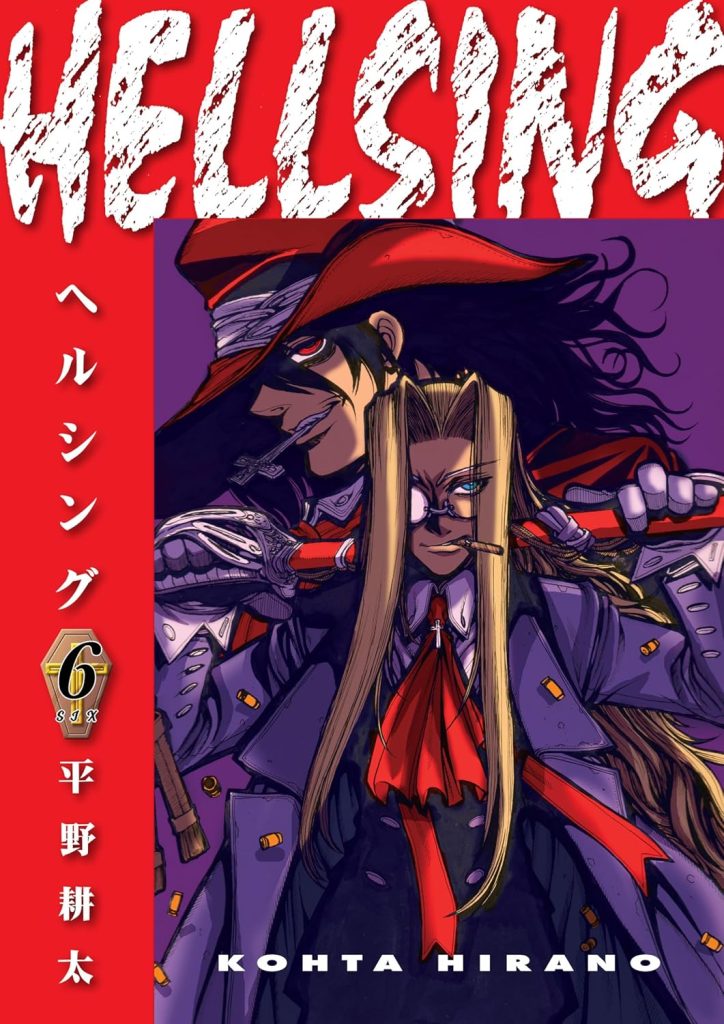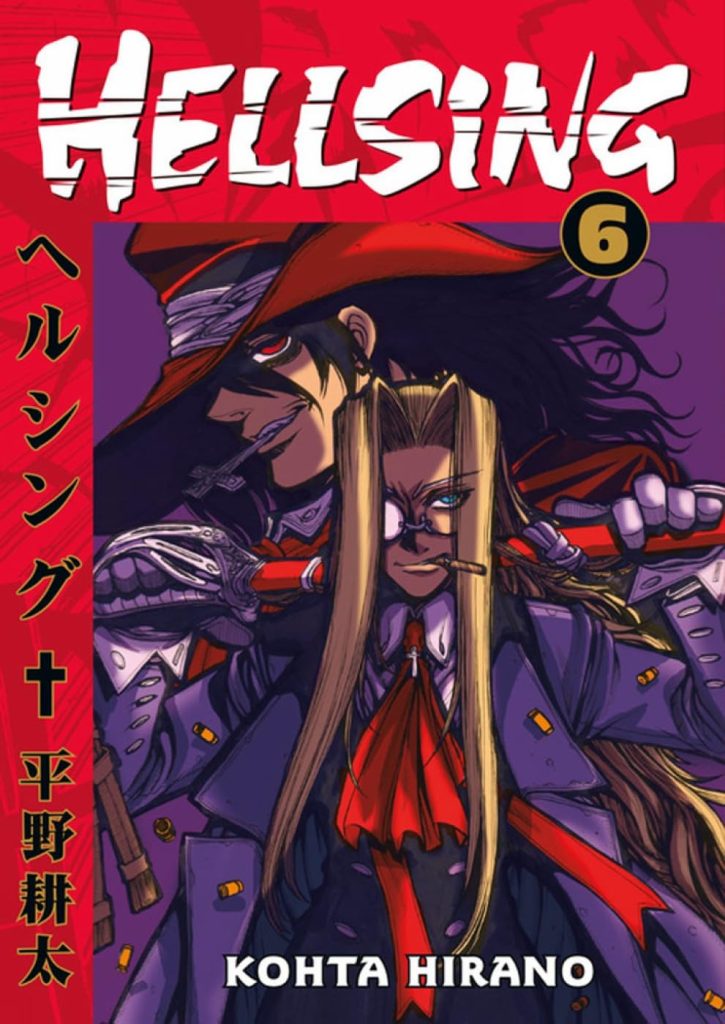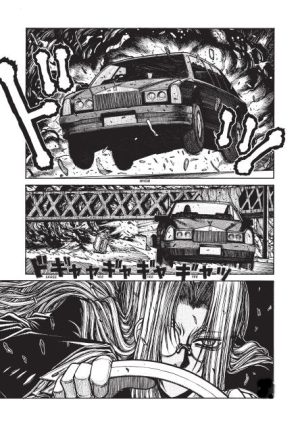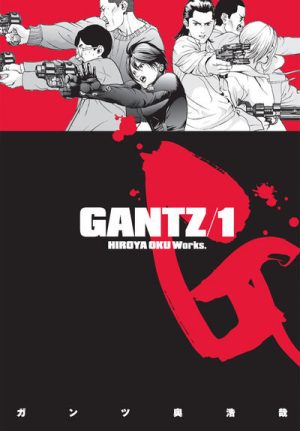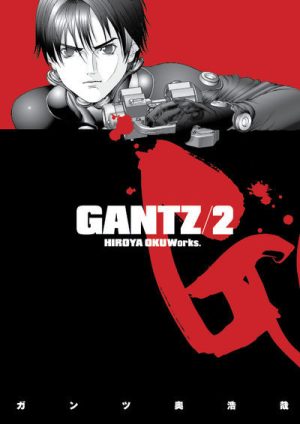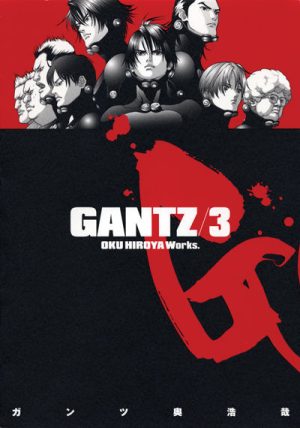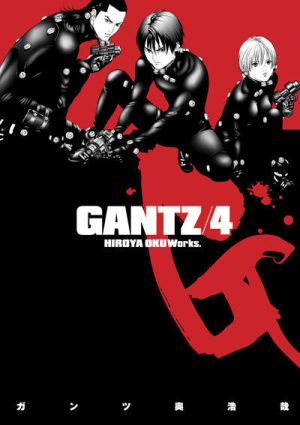Review by Ian Keogh
When first introduced the idea of Nazi vampires seemed more a passing fancy than a threat, but a whole warship of them landed in London and they’ve attacked Hellsing’s headquarters to devastating effect. Such is the chaos and damage they’ve caused that Integra Hellsing herself has had to flee. As the sample art shows, that’s not the end of her troubles. The Nazi vampires are well armed, protected from daylight and on the chase.
Hellsing began as out there, and has become ever more bonkers, Kohta Hirano escalating the improbable by the chapter, and delivering carnage on a scale that has to rank Hellsing among the most violent comics ever. Much of this is chase and hunt, but accompanied by mad captions and religious chanting. There’s almost a musical element to the mayhem, and to the vampires Hirano introduces, brigades consisting of ancient orders of knights, one of which may be labelled the Knights of Malta, but with their white, pointed headgear immediately bring another organisation to mind. They don’t play much of a part, so presumably they’re just something Hirano felt like drawing, because the series is like that. And midway through Hirano adds another plea for an assistant.
It’s easy to see why he needs one. Even though he’s increased the size of the captions and dialogue balloons, in artistic terms Hellsing is an incredibly labour intensive series. While short cuts would be possible, Hirano seems incapable of taking them, and every illustration is fully detailed and rendered, some without slaughter panels of great beauty.
Where is Alucard when all is falling to pieces in England? Well, nowhere to be seen, although the memory of him is enough to prompt a pivotal turnaround.
Anyone picking this volume up without having read at least Hellsing 5 will have no idea what’s going on, and that might equally apply to readers who have followed the series. As this volume ends, nothing is decided, no-one is safe and the mayhem continues in Hellsing 7.
